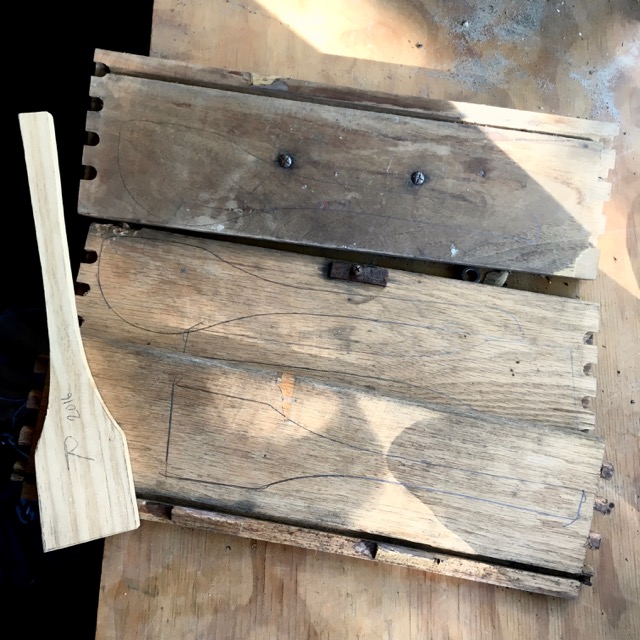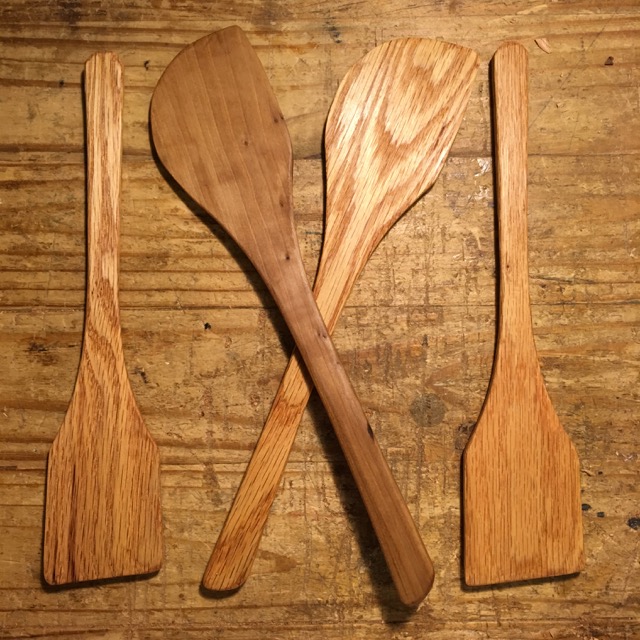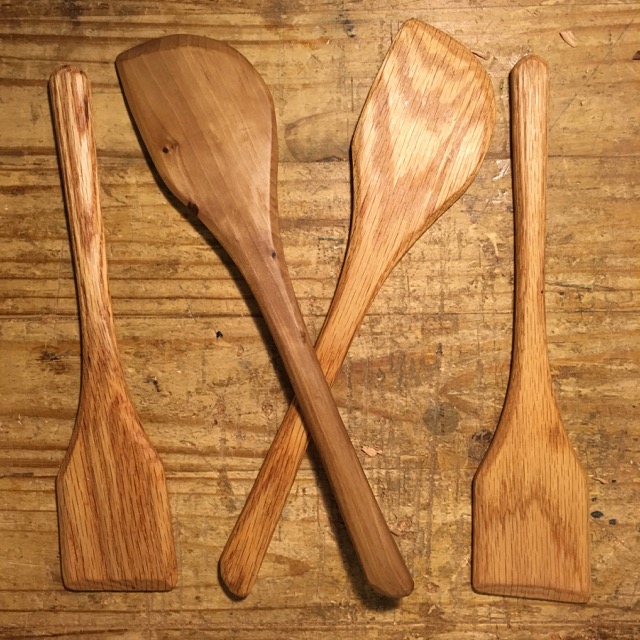People ask me where I get my wood for the spoons and spatulas I make. The truth is, I find it. Most of the time I salvage limbs and logs from downed trees, but sometimes I find wood in more interesting places–and that wood always has a real story.
A few years ago, we discarded an old desk that had completely fallen apart. But we saved two of the drawers to use as containers. We gave the big drawer to the kids to use as a small toybox, and the small drawer lived for several years on top of the clothes dryer, where it served as a tray for detergent and dryer sheets. After being dropped a couple times, the machine-cut dovetails finally gave way, and the drawer collapsed. I was about to toss the pieces in the firewood pile, but after seeing the straight, clear grain on some of the pieces, I decided to try repurposing the wood for spatulas.

The drawer had four sides and a plywood bottom. I threw out the bottom, as well as one side that had too much run-out in the grain. Two other sides had straight, clear grain, and while the pieces were pretty thin (just under 1/2″ thick), I thought I could use them. (That’s the bottom two pieces of wood in the above picture.) These pieces were obviously oak, probably red oak, a common furniture wood. Red oak is very porous, so most varieties are not very good for wooden spoons, but it can make pretty good stir-fry spatulas. After looking carefully at each piece for any splits, I laid out some spatulas from a template.
The final piece (the top one in the above photo) was originally the front of the drawer, which was thicker. It was also veneered on both sides, so I couldn’t easily tell what kind of wood it might be. I suspected either maple or poplar, both of which are common substrates for veneer. I had to do some guesswork on the best layout for this piece, but I also had to avoid the bolt holes in the center.

Weathering had turned this wood pretty gray, but I knew there would be a more attractive color underneath. I took each piece to the bandsaw and carefully cut to my layout lines. My templates are just a little oversized, in order to allow for the stock removal that follows.
Then I went to work with my drawknife, spookshaves, and card scrapers. The drawer sides were indeed red oak, which is quite hard when seasoned, and this wood was about as seasoned as wood can get! But it also cuts cleanly with sharp tools. I understand why furniture makers like using it.
The thicker, veneered piece was definitely a variety of poplar. There are several different kinds of poplar, though I haven’t bothered to attempt a more precise identification. The fact that this spatula was once a drawer front kind of overshadows the exact wood species.

The poplar had some small, tight knots in it, but otherwise there were no flaws in this wood at all. These are the fronts of each spatula.

These are the backs. The Danish-oil finish did indeed bring out some nice colors in the end.
Working with salvaged wood, especially from old furniture, is always a risk. You never know when you’re going to reveal a flaw that renders that piece unusable. But when you succeed, the risk is worth it.
I am always happy when I can reuse wood and give it a second (or third in your case) life.
On one of the Simpsons “couch intros” five or so years ago, It starts with these great medieval tapestries that take the craftsman a lifetime to make. The next 30 seconds is the life and evolution of these tapestries for the next 500 years ultimately leading to some of it being the rag Mo uses in his tavern. Your example, is the exact opposite result.
“Weathering”
I like to see such examples of turning wouldbe trash into utility,but I cringe when I think about how this original desk was neglected to the point that led to its destruction.
That’s a story in itself. It had been through a couple ham-fisted alterations before it was given to us. I made one more major repair (new legs) before we finally gave up on it. Poor thing, but its time had come.